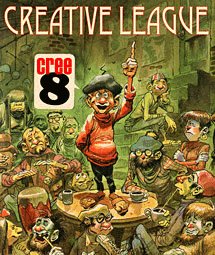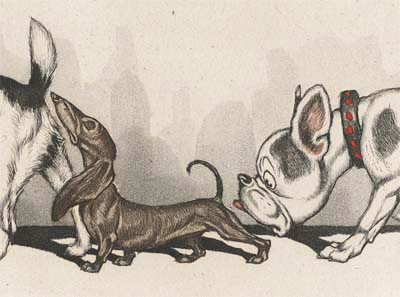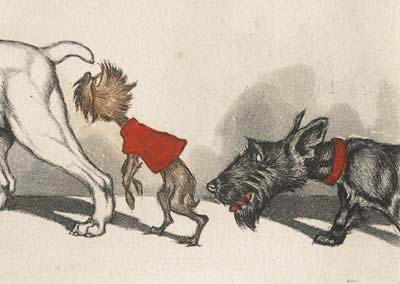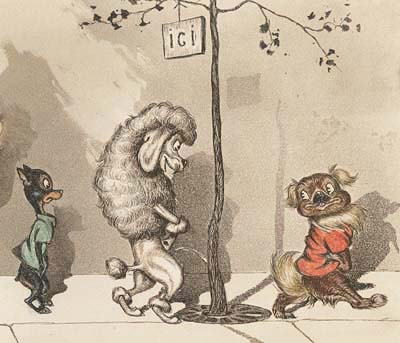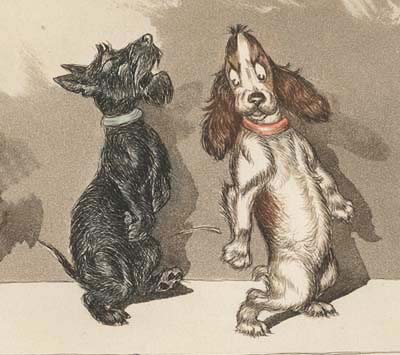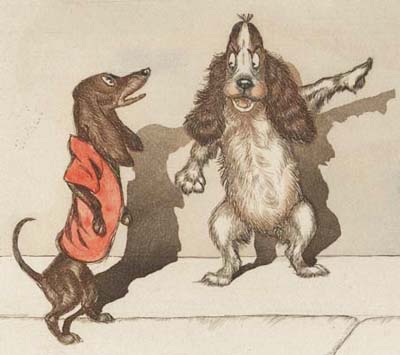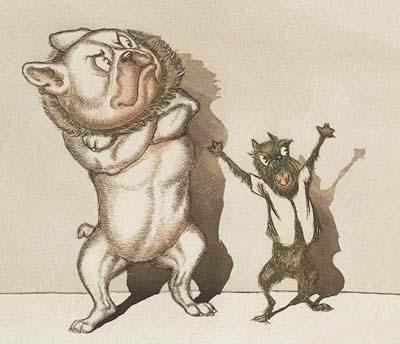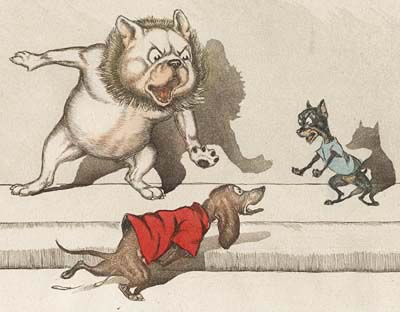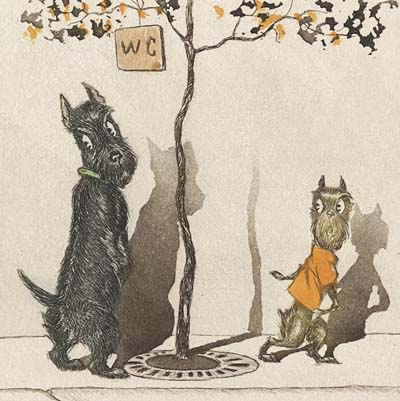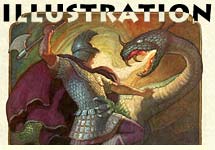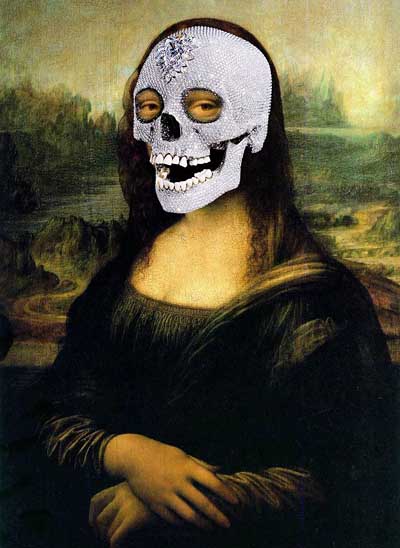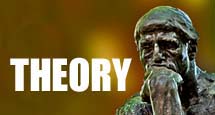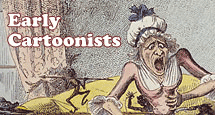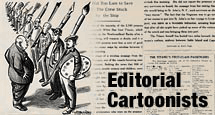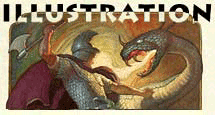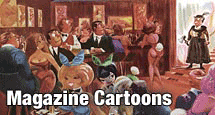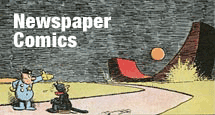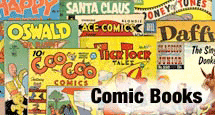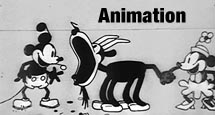People who aren’t members of Animation Resources don’t understand how comprehensive our Reference Packs are. Over the next couple of weeks, we will be posting what each section of our current RefPack looks like, starting today with the Featured section. If you are a member of Animation Resources, click on this post to go to the Members Only page. If you aren’t a member yet, today is the perfect time to join! Our current Reference Pack is one of our best yet, and General and Student Members get access to a special Bonus Archive with even more material from past Reference Packs.
What are you waiting for?

JOIN TODAY!
https://animationresources.org/membership/levels/

Every other month, Animation Resources shares a new Reference Pack with its members. They consist of an e-book packed with high resolution scans and video downloads set up for still frame study. Make sure you download the Reference Pack before it’s updated. When it’s gone, it’s gone!
REFPACK046: June / July 2022PDF E-BOOK:
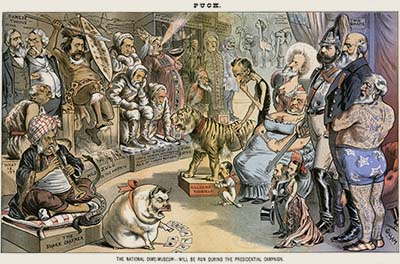
The Tattooed Man

Puck Magazine / March-April, 1884
Download this article
Puck was a seminal magazine in the field of American satire. Designed along the lines of European caricature journals, it was one of the first publications to take advantage of the development of four-color stone lithography and zinc plate printing. Prior to this, illustrations were laboriously engraved in blocks of wood. But at Puck, cartoonist Joseph Keppler drew directly upon lithographic stones with grease pencil. When complete, the drawings were etched with acid to create the printing plates. Assistants helped prepare the "tone stones", the blocks of stone which created the subtle blends of color for which Puck was famous.
Puck was not just a humor magazine— it was primarily concerned with political satire. Thomas Nast had established the precedent at Harper’s Weekly with his relentless attacks on Boss Tweed and the corruption rife within Tammany Hall. When Nast entered retirement, the popularity of Harper’s Weekly declined, and Puck rose to fame for its no-holds-barred attacks on corrupt American political figures, as well as its opinionated views of European politics. Puck also took aim at the Catholic and Jewish faiths, for which it generated considerable criticism. As time went by, the objects of satire became more political in nature. The orientation was decidedly in favor of the Democrats, with Republicans as the principle targets for mockery and derision.
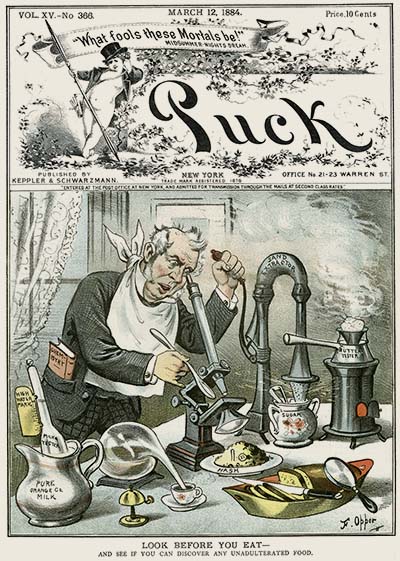
Competing head-to-head with Puck were Judge magazine, Police Gazette and Life. Judge stepped into the opposing political camp from Puck, favoring Republican candidates and skewering the Democrats. The Police Gazette’s stated mission was to provide information of interest to law enforcement officers, but it was just an excuse to print lurid stories of murder and outlaws from the Wild West, along with risque woodcuts of beautiful women. Life magazine took the high road, with "appropriate" material appealing to the elite, in stark contrast to the rough-and-tumble content of its competitors.
Bernhard Gillam was known for a strong forceful line and meticulous and precise style. He was most famous for a cartoon he created during the presidential campaign of 1884. Gillam depicted the Republican candidate, James G. Blaine as a tattooed man in a freak show, his skin covered with slogans referring to the various scandals that peppered his career. The April 16, 1884 issue of Puck that featured the cartoon quickly sold out and additional printings were hastily arranged. Circulation doubled, and ultimately, over 300,000 copies of the issue were sold.
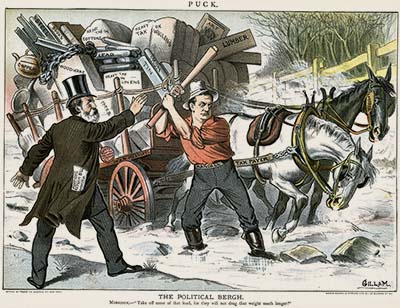
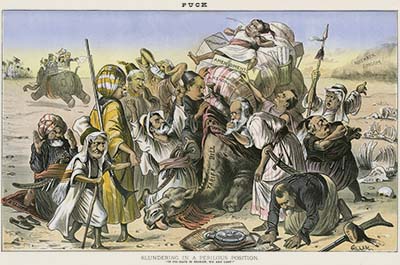
The “tattooed man” comic created a firestorm of controversy, throwing the spotlight on Puck. Over the next few months, Gillam fed the flames with a series of variations on the same theme. Keppler and Frederic Opper joined the fray to create a few "tattooed man" gags of their own. The cartoons reached such a high level of public awareness that Pear’s Soap advertisements parodied them. ("Hurray! Soap to remove tattoos!") The final election tallies between Blaine and his Democratic rival, Grover Cleveland were very close, and many, including Blaine himself, attributed his loss to Gillam’s cartoon. The irony of the situation was that Gillam himself was a Republican and had voted for Blaine. Political cartoonists in those days were expected to serve the editorial policy of their publication. They were considered "hired guns" and weren’t allowed to express their own political beliefs.
Animation Resources was fortunate to obtain a sequential run of issues of Puck magazine from 1884, the absolute creative peak of the publication. With artists like Keppler, Opper, Gillam and Zim, Puck boasted a "dream team" of cartooning. These four artists, along with Viennese artist Frederich Graetz, produced all of the illustrations for the magazine, as well as providing covers and cartoons for the monthly journal, Puck’s Library. That represented a remarkable amount of work. All of the amazing cartoons in this e-book were produced in the short period of seven weeks!
REFPACK046: The Tattooed Man

PDF / 124 Pages / 634 MB Download
MEMBERS LOGIN To Download
JOIN TODAY To Access Members Only Content
SD VIDEO:
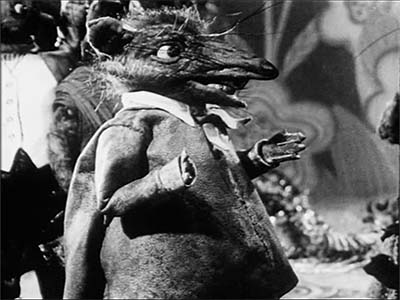
Two Shorts By Ladislas Starevich

The Town Rat And The Country Rat (1927) / The Old Lion (1932)
Ladislas Starevich created the first puppet animation film in 1912 and continued to work in the medium for half a century. He was born in Russia to Polish parents in 1882 and emigrated to France soon after World War I. Assisted by his wife, who made the costumes for the puppets, as well as his daughter and son, Starevich produced a large and varied filmography.
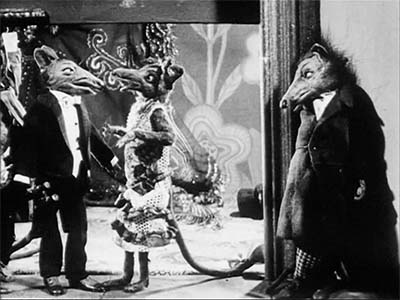
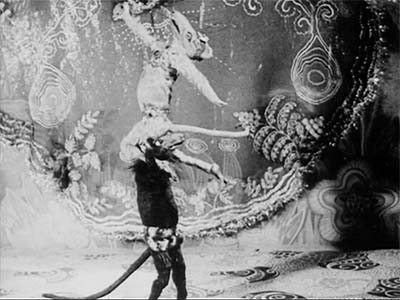
Town Rat, Country Rat is based on the Aesop’s Fable that also inspired Disney’s Country Cousin and Tex Avery’s Little Rural Riding Hood. A rat from Paris visits his friend in the country and brings him to the big city. After an evening of wine, women and song, a cat appears and breaks up the party. The country rat decides that the city is too dangerous for him, and he goes home to dream of the pretty dancing girl rat… and the cat.
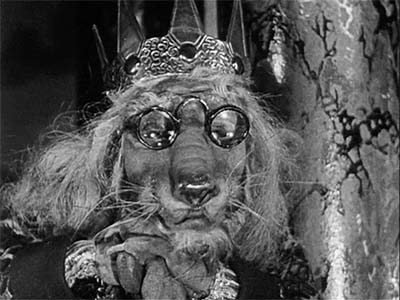
The Old Lion is based on a story by La Fontaine. The lion sits on the throne of his kingdom, but he is getting old. His ministers conspire to overthrow him behind his back. The king goes outside on the patio where he meets an organ grinder and a monkey. They play and sing an old familiar song, and the old lion falls asleep and dreams of past conquests. In his dream, he woos and elopes with a beautiful lioness princess. He awakes to find that his cabinet has deposed him. They kick him out of the castle, and he goes to a cave in the wilderness where he dies, brokenhearted.
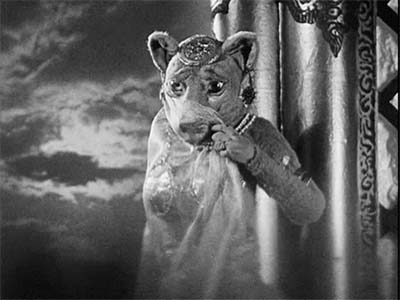
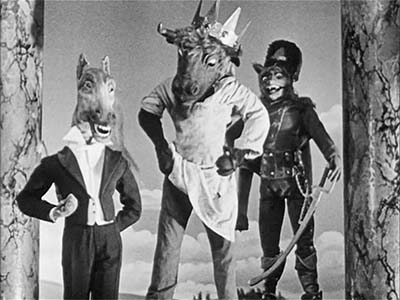
Starevich was probably the greatest stop-motion animator who ever lived. As you watch these films, I think you’ll be struck at how lifelike the puppets are. This is partly because they are made from bits of real animals and insects! But the most impressive aspect of the animation is the timing. Often, stop-motion animators use snap-to-pose animation with holds to get across attitude and movement. It simplifies the timing and increases clarity. Starevich animated differently. Primary and secondary action overlap and flow, giving the figures continuous life. There are some extremely sophisticated scenes here with vivid acting, large groups of characters all animating at the same time, and complicated dance choreography, complete with motion blur. Starevich makes it all look easy.
REFPACK046: City Rat, Country Rat

MP4 Video File / SD / 13:40 / 487 MB Download
REFPACK046: The Old Lion

MP4 Video File / SD / 08:36 / 313 MB Download
MEMBERS LOGIN To Download
JOIN TODAY To Access Members Only Content

Animation Resources is asking our membership to consider donating to help us establish a video podcasting studio to be able to present seminars, interviews and informal updates live streamed on YouTube and Facebook. Our goal is for 25 of our members and supporters to donate $100. If you donate $100, we will provide you with a coupon code for a free membership to give as a gift to a friend or peer, or we can credit your donation to sponsor two students for a one year student membership.
By helping others, you help yourself.
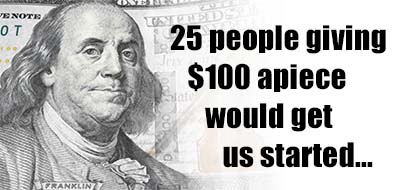
Please consider donating using the PayPal Donate Button below. For more information on our Video Podcasting Fundraiser, see the article Animation Resources Needs Your Help.

 Animation Resources depends on your contributions to support its projects. Even if you can’t afford to donate $100 or join our group right now, please click the button below to donate whatever you can afford using PayPal. Every little bit helps.
Animation Resources depends on your contributions to support its projects. Even if you can’t afford to donate $100 or join our group right now, please click the button below to donate whatever you can afford using PayPal. Every little bit helps.

Or you can donate on Facebook, here…
FACEBOOK LIVESTREAM FUNDRAISER
After you have donated, drop us an email at sworth@animationresources.org and let us know if you would like a discount code for a free membership, or if you would like us to sponsor students with your donation.
Raising the bar with our live streaming initiative will make things better for the whole art form. Don’t stay on the sidelines. Be a part of Animation Resources and join our team to build the foundation for the future of animation.









 by
by 





